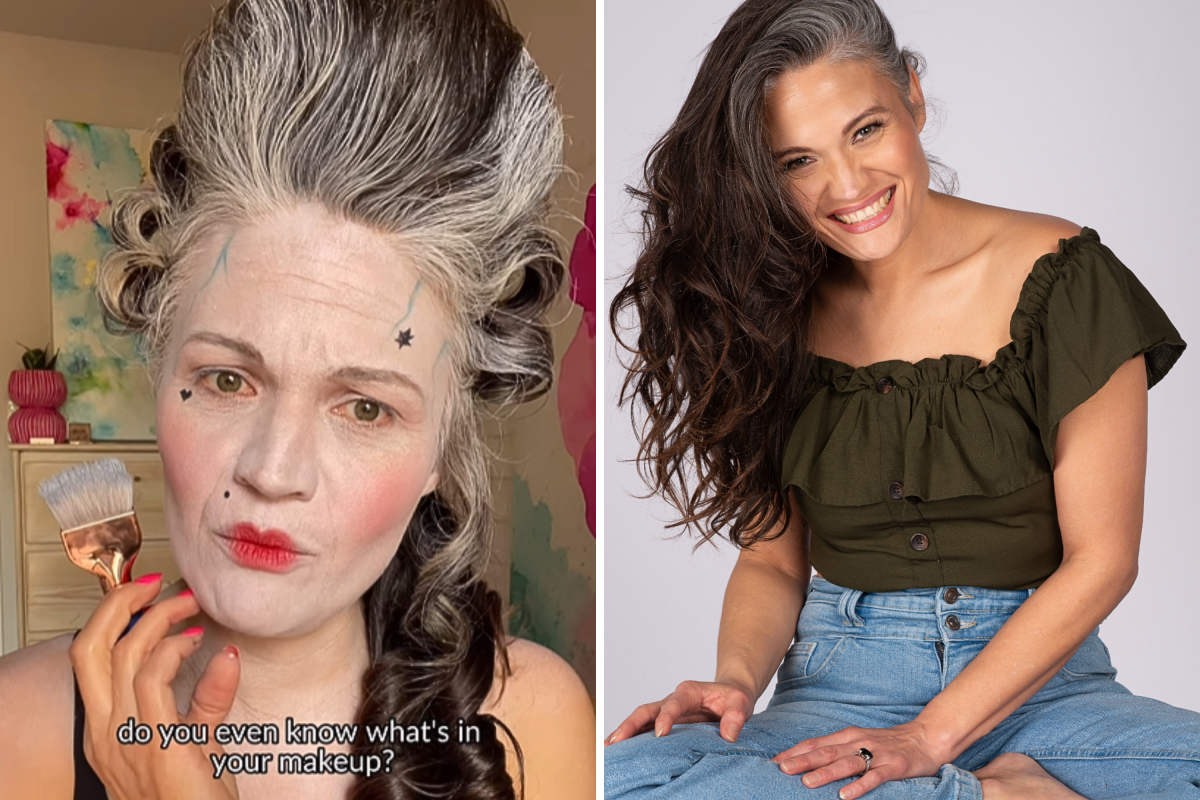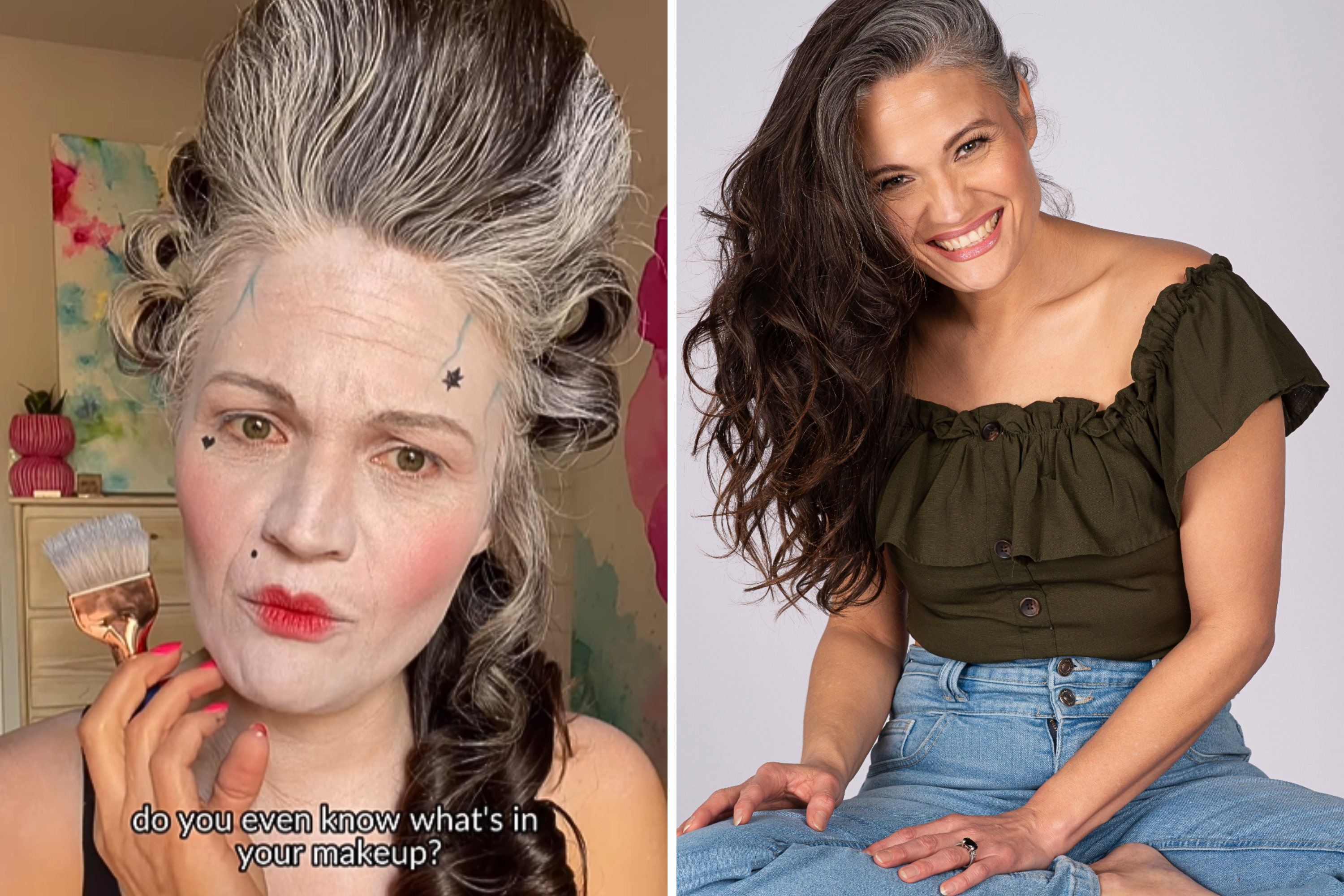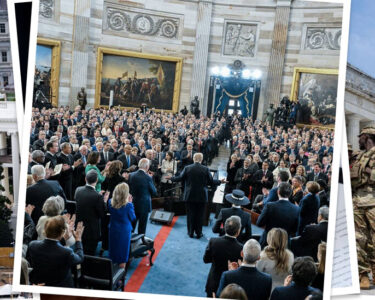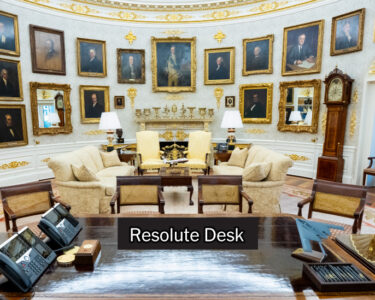While historical reenactments and viral beauty trends frequently circulate online, it’s rare for the two types of content to intersect.
JaDe Rain has changed that, after shocking thousands of viewers on Instagram with her take on 18th-century style. The content creator, known online as @jaderainbeauty, took to the platform on June 4 to share a stark depiction of the era’s dangerous beauty practices, which featured chemical elements such as lead and mercury.
In the clip, Rain walked viewers through the toxic and harmful chemicals that once adorned the faces of women in the pursuit of beauty.
“The most important thing about 18th-century makeup is that it wasn’t really that white,” Rain, who has a professional background in makeup artistry, told Newsweek. “Cosmetics nowadays use titanium dioxide as a replacement for white lead.”
“It is much brighter and more opaque than white lead,” she added.

@jaderainbeauty
Rain applies thick white paint to her face in the video for viewers to see, though she acknowledges that the bold shade she coated her face in on camera was less subtle than the products that would have been worn in the 18th century.
The paint had been used to represent the white lead and vinegar concoction used historically. Such mixtures were known to cause severe health issues, including lead poisoning, which could lead to muscle paralysis and even death.
“Would you poison yourself to be prettier?” Rain asked viewers. “Welcome to the 18th-century, where beauty isn’t pain; it’s poison.”
The creator continued her demonstration by drawing blue veins on her face with a pencil, explaining that pale skin was idolized as a sign of wealth and status.
“If you’re wealthy, you don’t have to go outside to work, so you don’t tan. So if you’re rich, you’re very light,” she said, adding that all social classes aspired to such an appearance. She then reached for a brown pencil and used it to draw on crescent-shaped eyebrows, indicative of the lead used in 18th-century makeup.
The look was completed with a small coral pout on her lips and rosy circles on her cheeks.
Rain captioned the post: “This look seems extreme. But really we do a lot of similar things now. Especially not checking the ingredients in our makeup.”
“I didn’t want to post on social media at first,” Rain, who has more than 351,000 followers on Instagram, told Newsweek. “I didn’t have a lot of respect for the overdramatic personalities and makeup looks done by influencers. It didn’t feel authentic.”
But Rain soon changed her mind—driven, she said, by a desire to educate and empower women about makeup and how it can be used.
“Women admitted to me with embarrassment that they didn’t know how to do makeup,” she said. “It broke my heart. These women felt like they were lacking something that came so easily to me.”
Rain’s goal became to break down her 17 years of professional makeup experience into easily understandable steps, focusing on production makeup, which enhances rather than distracts.
Rain attributes much of her success online to her teenage daughter, who acts as her social media manager.
“She is responsible for the visual and verbal hooks and all the editing,” she said.
Makeup in the 18th-Century
The 18th century was an era characterized by elaborate fashion and beauty rituals, with makeup playing a pivotal role in both the social and cultural fabric of the time.
Unlike today’s emphasis on natural beauty and minimalism, makeup in the 18th century was bold, artificial and often dangerous.
One of the most notable aspects of 18th-century makeup, as Rain showed, was the use of white lead and vinegar to create a pale complexion. This mixture, known as ceruse, was highly toxic, leading to severe health issues, skin deterioration and even death.
The desire for a porcelainlike complexion was rooted in social status. To enhance this pale effect, women would often draw blue veins on their faces using delicate blue pencils, emphasizing their fair skin. Brows were another focal point. Women of this era often used dark lead or mercury pencils to accentuate their eyebrows, drawing them in crescent shapes. These materials, too, were toxic, posing long-term health risks.
Rain’s tutorial has sparked wide interest in historical makeup practices among viewers online, as it drew attention to the dangerous lengths to which people have gone for beauty. The post, which has been liked more than 753,000 times, has shocked viewers and sparked debate about modern and historical beauty practices.
“I wish there was some eerie background music to this because this is creepy cool,” one viewer commented.
Another added, “I like how you remind us that we literally are no different.”
“Makeup still is poison, just less of a dose,” another user said.
Rain said: “After asking millions of people, the verdict on whether people would still poison themselves to be prettier is that most people would and knowingly are still poisoning themselves to be prettier.”
Do you have any funny or adorable videos or pictures that you want to share? We want to see the best ones! Send them in to li**@******ek.com and they could appear on our site.
👇Follow more 👇
👉 bdphone.com
👉 ultraactivation.com
👉 trainingreferral.com
👉 shaplafood.com
👉 bangladeshi.help
👉 www.forexdhaka.com
👉 uncommunication.com
👉 ultra-sim.com
👉 forexdhaka.com
👉 ultrafxfund.com
👉 ultractivation.com
👉 bdphoneonline.com




